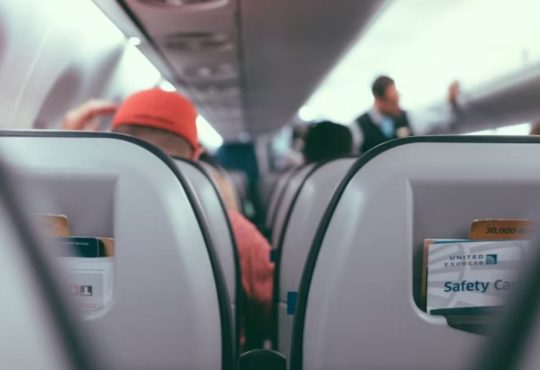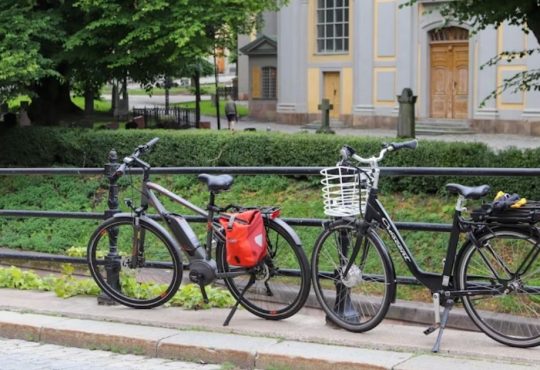Traveling abroad is an exciting adventure, whether you’re dreaming of strolling through the cobblestone streets of Paris, exploring the vibrant markets of Bangkok, or marveling at the natural wonders of New Zealand. However, for many destinations, one crucial step stands between you and your journey: obtaining a travel visa. If you’re new to international travel, the visa application process might seem daunting—forms, fees, embassy visits, and unfamiliar terms can feel overwhelming. But don’t worry! This comprehensive guide, tailored for beginners in 2025, will walk you through every aspect of availing a travel visa, from understanding what it is to submit your application confidently. By the end, you’ll be ready to tackle this process like a pro.
Travel Visa: What it is and Why it’s Required
A travel visa is an official document or endorsement issued by a country’s government that grants you permission to enter, stay, or transit through its borders for a specific purpose and duration. It’s the key to your destination. Not every country requires a visa from every traveler—some allow visa-free entry for certain nationalities—but many do, especially for tourism, business, or extended stays.
In 2025, the global travel landscape continues to evolve, with countries updating their entry requirements to balance security, tourism, and international relations. For instance, this year, the European Union’s ETIAS (European Travel Information and Authorization System) became mandatory for visa-exempt travelers. At the same time, countries like Namibia introduced new visa rules for previously exempt nationalities. As a beginner, understanding why you need a visa starts with knowing your destination’s laws and your nationality’s agreements with that country.
Why do you need a visa? Simply put, it’s about control. Governments use visas to regulate who enters their borders, ensuring visitors meet health, security, and economic standards. For you, it’s the ticket to enjoy your trip without complications at immigration checkpoints legally.
Step 1: Determine if You Need a Visa
The first step in the visa process is determining whether your destination requires one. This depends on three main factors: your nationality, the country you’re visiting, and the purpose of your trip (e.g., tourism, business, or study). Here’s how to get started:
- Check Visa Requirements Online: Visit the official government website of your destination country—look for sections labeled “visa,” “entry requirements,” or “immigration.” For example, the U.S. Department of State’s travel website (travel.state.gov) offers detailed country-specific information for American travelers, while the UK’s GOV.UK site does the same for British nationals. Many countries also list visa policies on their embassy or consulate websites.
- Use Visa Checker Tools: Websites like VisaGuide.World or the Passport Index allows you to input your nationality and destination to see if a visa is required quickly. These tools are beginner-friendly and provide a starting point, though always cross-check with official sources.
- Understand Visa Types: visas come in various forms:
- Tourist Visa: Leisure travel is typically valid for 30–90 days.
- Transit Visa: Issued for travelers passing through a country to another destination.
- Electronic Visa (e-Visa): Applied for online, often faster and simpler.
- Visa on Arrival: Issued at the border or airport upon entry.
- Electronic Travel Authorization (ETA): Not a visa but a pre-entry requirement, like the U.S. ESTA or UK ETA.
For example, as of March 26, 2025, Americans traveling to Europe need an ETIAS authorization (not a visa) for short stays, costing €7 and valid for three years. Meanwhile, a trip to India might require an e-Visa, which can be applied online, while China often demands an embassy-issued tourist visa.
- Consider Your Passport: Ensure your passport is valid for at least six months beyond your planned departure date and has blank stamp pages. Some countries won’t issue visas if these conditions aren’t met.
If your destination offers visa-free entry or an ETA, your process might be more straightforward. But if a visa is required, read on for the next steps.
Step 2: Research the Specific Visa Requirements
Once you confirm a visa is necessary, dive into the details. Every country has unique rules; missing a requirement can lead to delays or rejection. Here’s what to look for:
- Eligibility: Who can apply? Some visas have age, nationality, or purpose-specific criteria.
- Documents: Common requirements include:
- A valid passport (with copies of the info page).
- Recent passport-sized photos (check size and background rules—e.g., the U.S. requires 2×2-inch images with a white background).
- Proof of travel plans (flight itinerary, hotel bookings).
- Financial evidence (bank statements, pay stubs) to show you can support yourself.
- A completed application form (online or paper, depending on the country).
- Fees: Costs vary widely—$10 for an ETA, $185 for a U.S. B1/B2 visa, or more for expedited processing.
- Processing Time: This can range from days (e-Visas) to weeks or months (embassy visas). In 2025, expect longer waits during peak travel seasons like summer or holidays.
- Application Method: Online, by mail, or in person at an embassy/consulate.
For instance, applying for a Schengen Visa (for 27 European countries) in 2025 requires a detailed itinerary, travel insurance with €30,000 medical coverage, and proof of accommodation. Contrast this with South Africa’s upcoming ETA system, which might only need an online form and a small fee.
Pro Tip: Write down all requirements or save them digitally. Missing even one document can derail your application.
Step 3: Gather Your Documents
Now that you know what’s needed, it’s time to collect everything. This step is critical—think of it as building your case to convince the authorities you’re a legitimate visitor. Here’s a beginner’s checklist:
- Passport: Double-check validity and blank pages.
- Photos: Take these professionally if possible; many countries reject selfies or non-compliant images.
- Application Form: Download it from the embassy website or start online (e.g., the U.S. DS-160 form). Fill it out carefully—errors can cause delays.
- Travel Proof: Book flights and accommodations, but use flexible options if your visa is denied. A reservation confirmation often suffices.
- Financial Proof: Gather 3–6 months of bank statements or a letter from your employer showing steady income. Some countries, like Australia, may ask for a minimum balance (e.g., AUD 5,000 for a tourist visa).
- Additional Documents: Depending on the country, you might need:
- A letter of invitation (if visiting friends/family).
- Travel insurance (mandatory for Schengen countries).
- Health certificates (e.g., a TB test for the UK if staying over six months).
Organize these in a folder, physical or digital, and make copies. Embassies often keep originals, so backups are essential.
Step 4: Submit Your Application
With documents in hand, you’re ready to apply. The method depends on the visa type:
- Online (e-Visa/ETA):
- Visit the official portal (e.g., India’s e-Visa site or the EU’s ETIAS platform).
- Create an account, upload documents, and pay the fee with a credit/debit card.
- Save the confirmation email—print it if required at the border.
- Embassy/Consulate:
- Schedule an appointment online or by phone. In 2025, wait times can vary—check the embassy’s website for current estimates (e.g., U.S. consulates list wait times by city).
- Submit your application in person or by mail (if allowed). Include a self-addressed stamped envelope for return if mailing.
- Pay the fee—cash, card, or money order, depending on the embassy.
- Visa on Arrival:
- Confirm eligibility beforehand (e.g., Thailand offers this for some nationalities in 2025).
- Bring cash in the local currency for the fee and all required documents.
Track your application if possible—many embassies provide online status updates using a reference number.
Step 5: Prepare for the Interview (If Required)
Some visas, like the U.S. B1/B2 or UK Standard Visitor Visa, require an in-person interview. This can be nerve-wracking for beginners, but preparation is key:
- What to Expect: A consular officer will ask about your travel purpose, finances, and ties to your home country (e.g., job, family) to ensure you’ll return.
- Common Questions:
- “Why are you visiting?”
- “How long will you stay?”
- “Who’s paying for your trip?”
- Tips:
- Be honest and concise—don’t over-explain.
- Bring all documents, even extras, in a neat folder.
- Dress smartly (business casual) to make a good impression.
- Practice answers with a friend to build confidence.
In 2025, biometric data (fingerprints, photos) is often collected during the interview, so arrive early and follow security rules (no bags or electronics in many embassies).
Step 6: Wait and Receive Your Visa
Processing times vary:
- E-Visas/ETAs: 1–7 days (e.g., Australia’s ETA is often instant).
- Embassy Visas: 2 weeks to 3 months (e.g., a Canadian visitor visa might take 30 days).
- Visa on Arrival: Immediate, but queues can delay entry.
Once approved, you’ll receive your visa as a sticker in your passport, a separate document, or an email (for e-Visas). Check it for name, dates, and visa type errors, and contact the embassy if anything’s wrong.
If denied, don’t panic. Review the rejection reason (often provided in writing), fix the issue (e.g., missing documents), and reapply. Some countries allow appeals, but this is rare for tourist visas.
Step 7: Plan Your Trip
With your visa secured, finalize your travel plans:
- Confirm flights and accommodations.
- Buy travel insurance (even if not required—it’s a safety net).
- Learn essential customs and entry rules (e.g., some countries limit alcohol or require vaccination proof in 2025).
At the border, present your visa, passport, and supporting documents (like a return ticket). Stay calm—immigration officers may ask a few questions, but you’re prepared!
Tips for Beginners in 2025
- Start Early: Apply 3–6 months ahead to account for delays.
- Stay Updated: Check for changes—new rules like Israel’s ETA-IL or Thailand’s ETA system roll out in 2025.
- Avoid Scams: Use official government sites, not third-party agents charging exorbitant fees.
- Budget Wisely: Factor in visa costs alongside travel expenses.
- Ask for Help: Contact the embassy or a travel agent if confused—better safe than sorry.
Your Adventure Begins with a Visa
Availing a travel visa in 2025 doesn’t have to be intimidating. You can easily navigate the process by breaking it down into clear steps—checking requirements, gathering documents, applying, and preparing for interviews. Each visa is a gateway to new experiences, and as a beginner, mastering this skill opens up the world. Whether you’re chasing sunsets in Bali or business meetings in Dubai, your journey starts with that stamp or email. So, take a deep breath, start planning, and get ready to explore—your adventure awaits!





